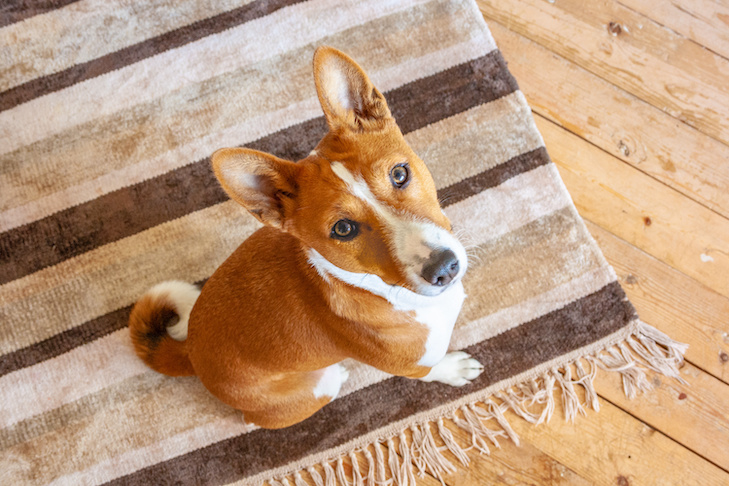For thousands of years, Basenjis served as hunting dogs for various African peoples, and have since won the hearts of many others around the world. Here are seven interesting facts you may not have known about this ancient breed.
They Might Be the World’s Oldest Dog Breed
Cave paintings found in Libya and dated to 6,000 B.C. depict hunters with dogs that have curled tails — one of the Basenji’s distinctive features. Basenjis are also depicted on ancient Egyptian artifacts. Historical evidence suggests they were transported from Central Africa as gifts for the pharaohs.
They May Have Inspired an Egyptian God
Anubis, the Egyptian god of mummification and the afterlife, has the body of a man and the head of a canine. No one is sure exactly what animal inspired this god, but it does have the distinctive pricked ears and slender snout that the Basenji has.

Their African Breed Name Has a Literal Translation
The Basenji’s African breed name, “M’bwa m’kube M’bwawamwitu,” translates to “the jumping-up-and-down dog,” and it’s pretty accurate! Historically, this breed was known for how high it could jump, which remains one of their very impressive traits.
They’re Hunting Dogs
Basenjis are skilled hunting dogs. The breed was developed with great emphasis placed on intelligence, courage, and adaptability. These traits aided the dog in the field, as frequently the dogs would work out of the sight of the hunters.
They Don’t Bark
The Basenji’s larynx is shaped differently than those in most other dogs, so they cannot produce a bark. They can growl or make a yodeling sound, but they don’t vocalize often. For this reason, the African tribes who use Basenjis as hunting dogs will tie bells around them. As the Basenjis track the prey, the hunters follow the sound of the bells.
They Have Soulful Eyes
Basenjis are known for their dark, almond-shaped eyes, which many owners say convey human-like emotions. Who knows — maybe this breed understands us more than we realize!

They Didn’t Come to the West Until the 1900s
Considering that they may be the oldest type of dogs in the world, Basenjis have not been bred in Western countries for very long. The British first tried to import them in 1895, but all the dogs they brought died of distemper, a viral infection. It wasn’t until 1937 that the Basenjis were successfully established in England, and they landed in the United States shortly after.
They’re Very Independent
The breed can be quite independent and aloof at times. Basenjis are alert and careful with strangers, open and calm with friends, and loving and solicitous with children. When meeting strangers, the Basenji prefers to make the first overtures.

They Groom Themselves
Basenjis groom themselves like cats do, so they don’t have the typical dog smell. And self-grooming isn’t the Basenji’s only cat-like quality. They can be independent, aloof, difficult to train, and typically bond only with one or two members of a family.
‘Bois’ and ‘Congo’ Were America’s First Basenjis
A breeder in England had intended to breed male Basenji, “Bois,” but tragically, the female and all of that first litter did not survive. Bois was brought to Boston by another breeder, and bred to female “Congo” — the first Basenjis bred in the United States.

